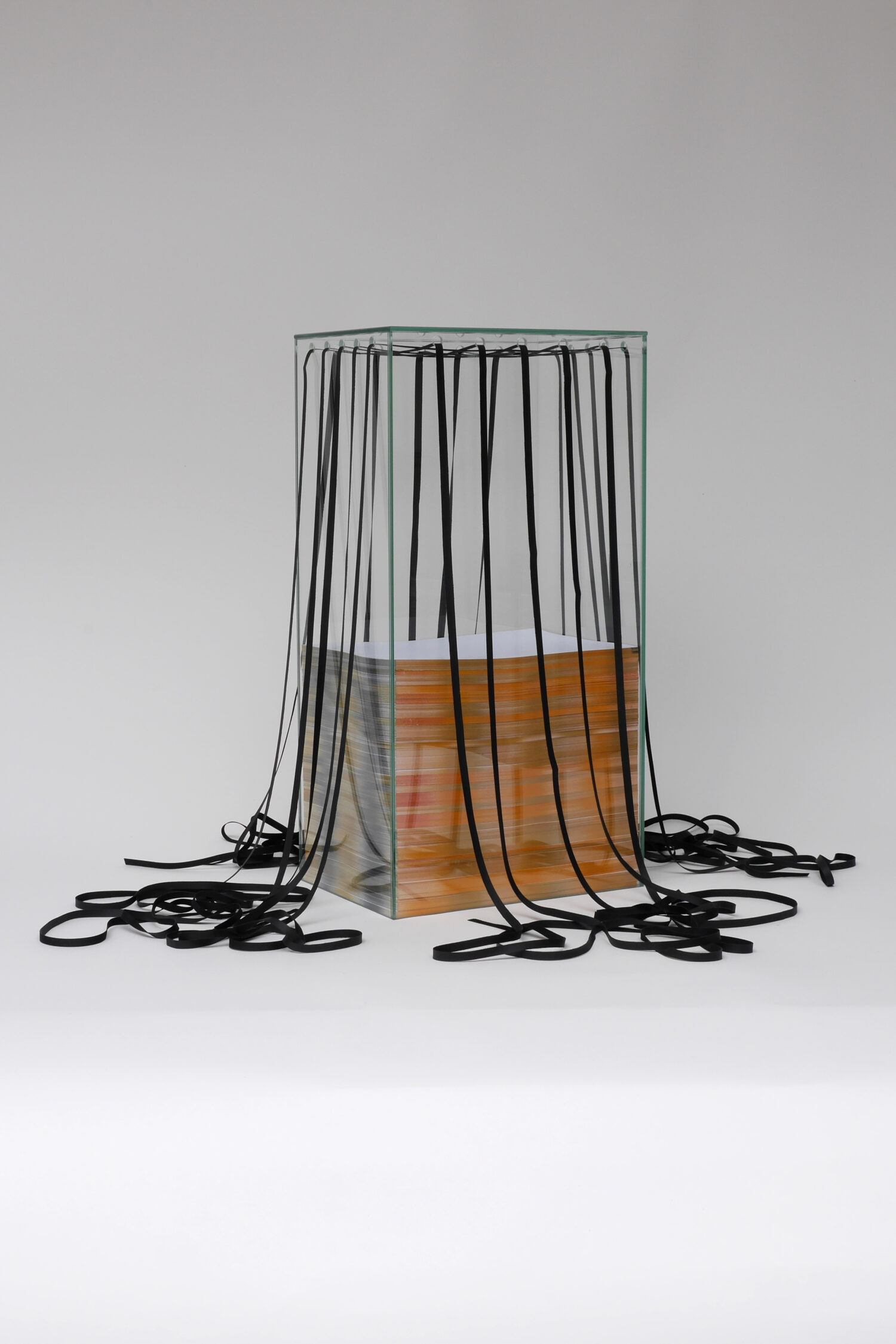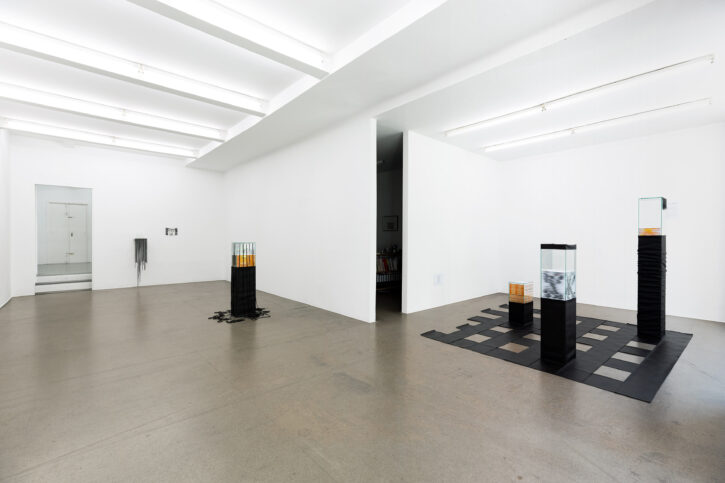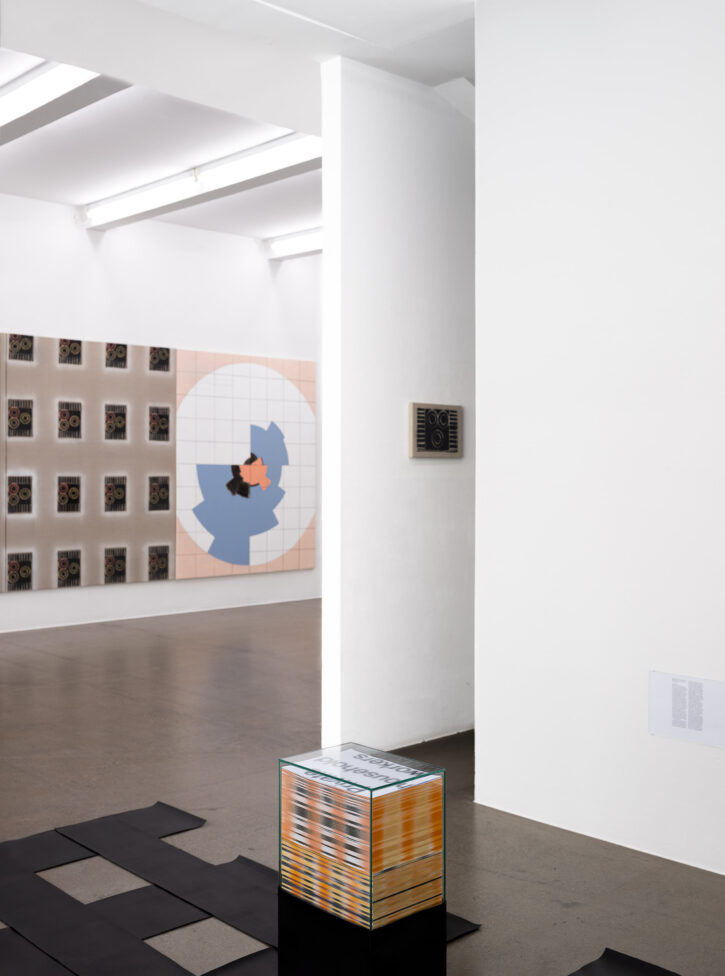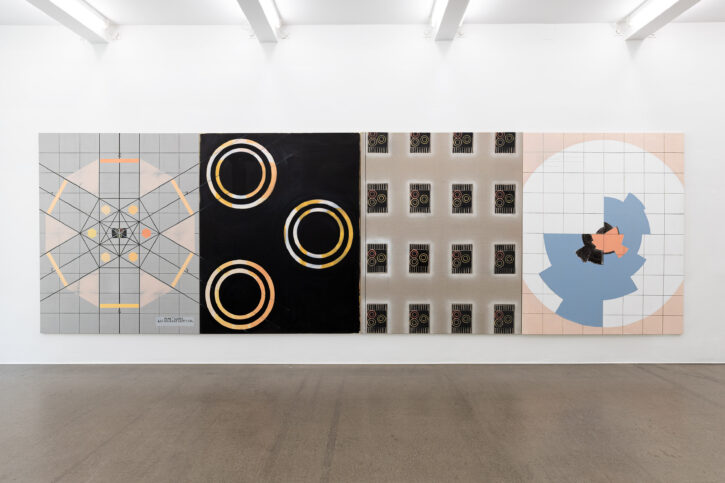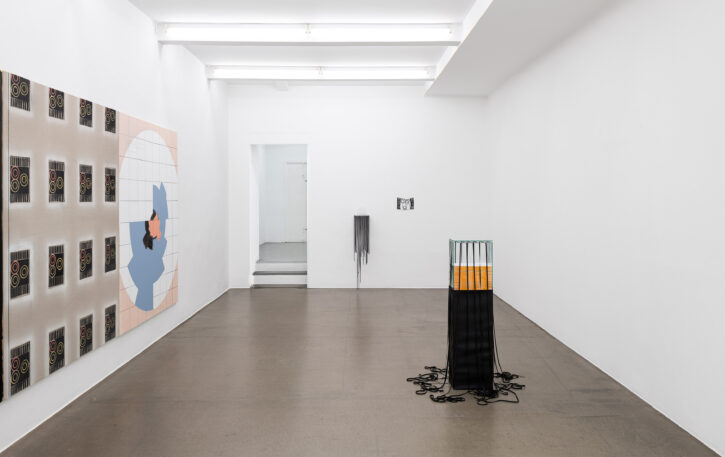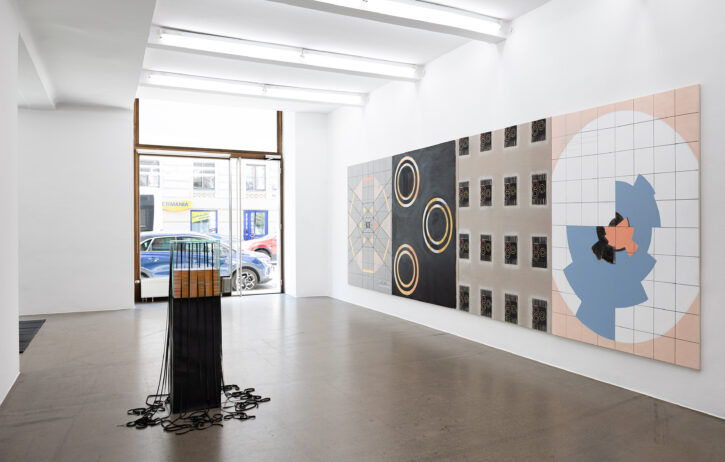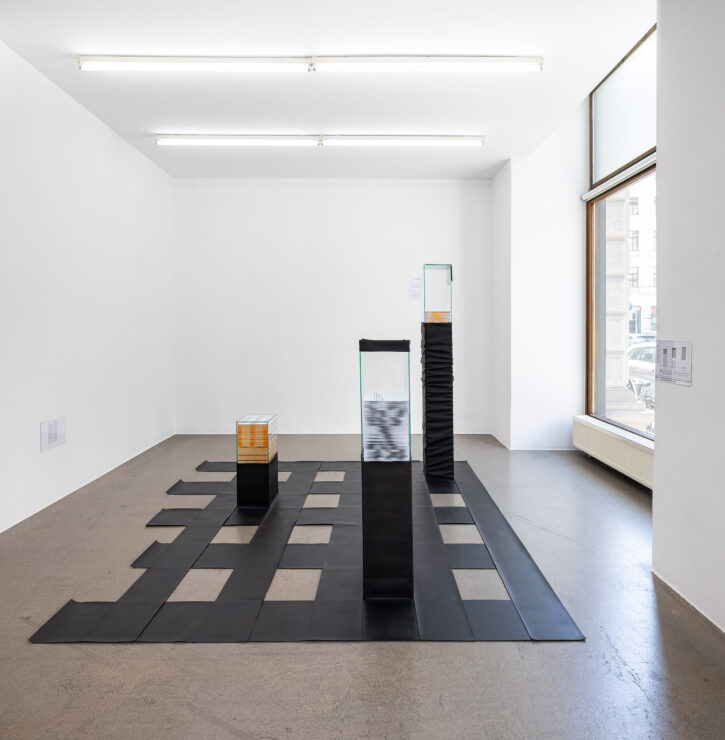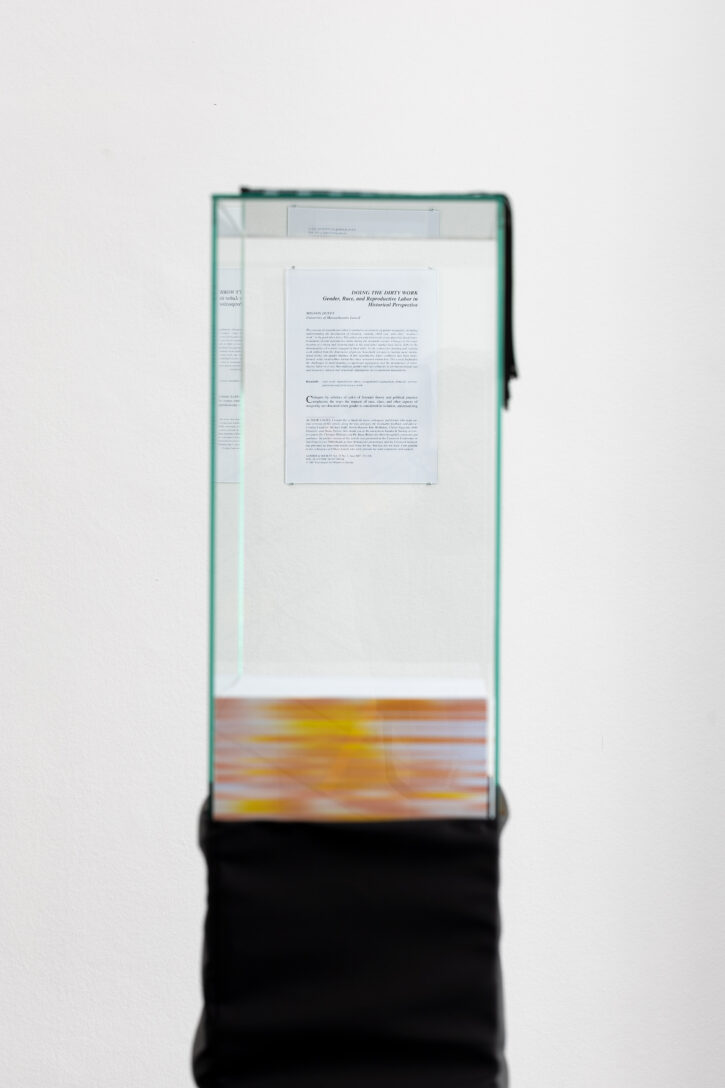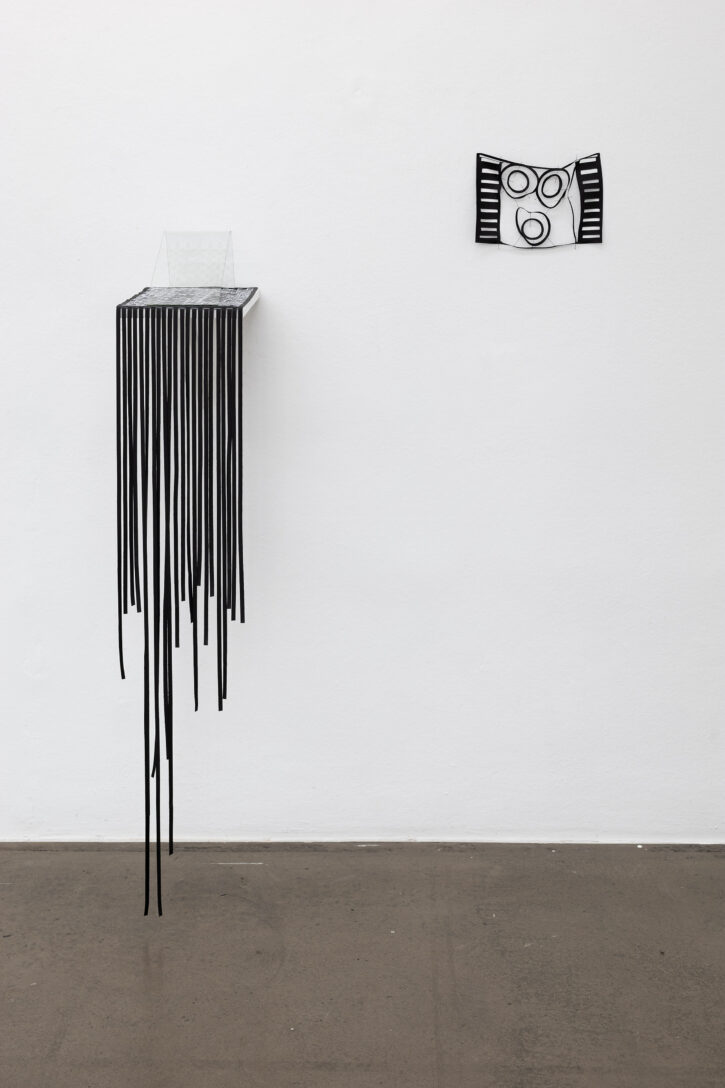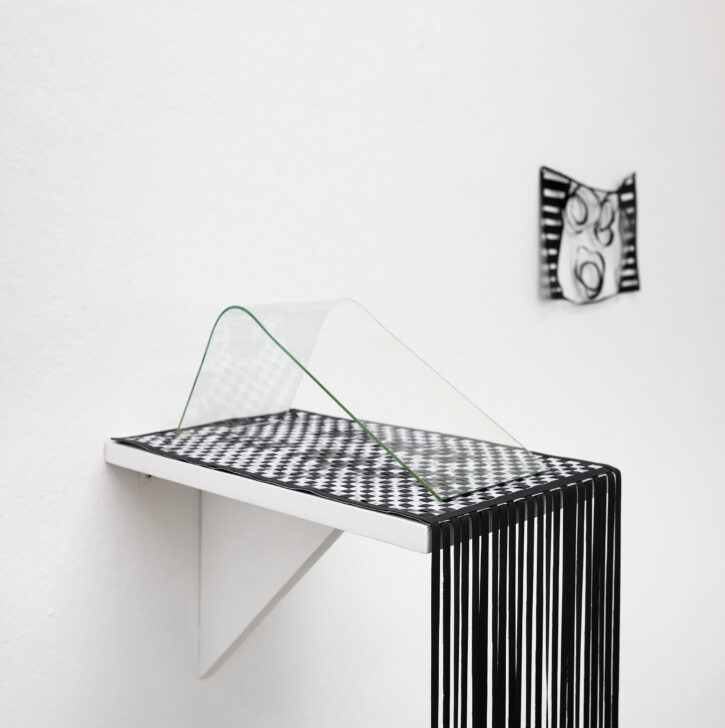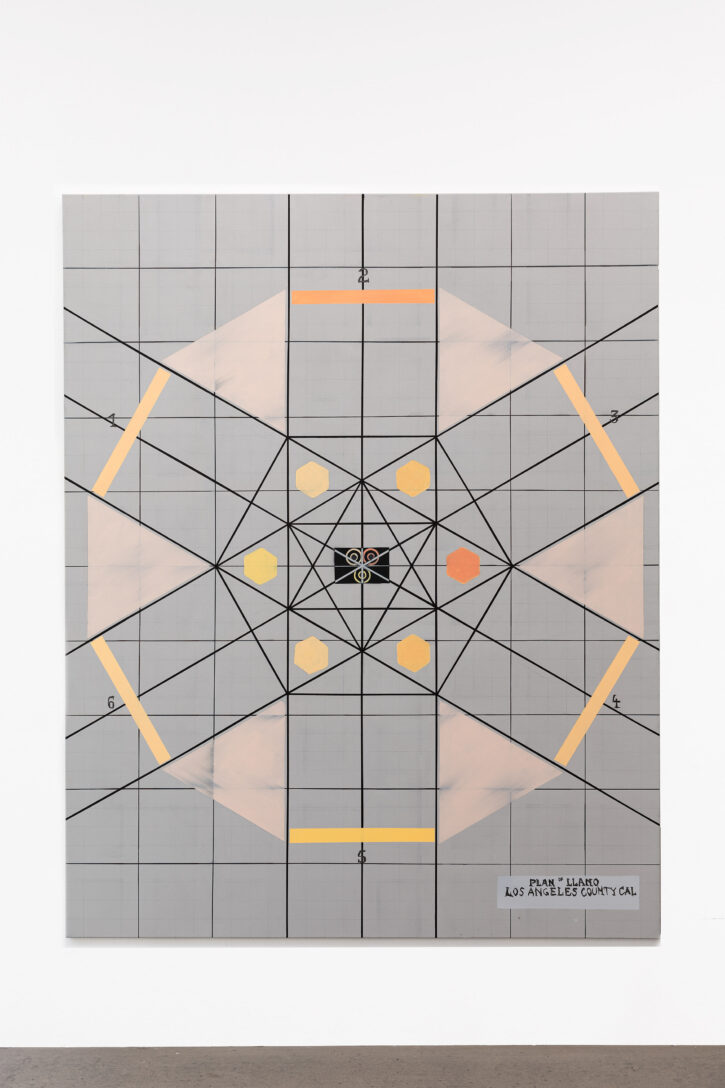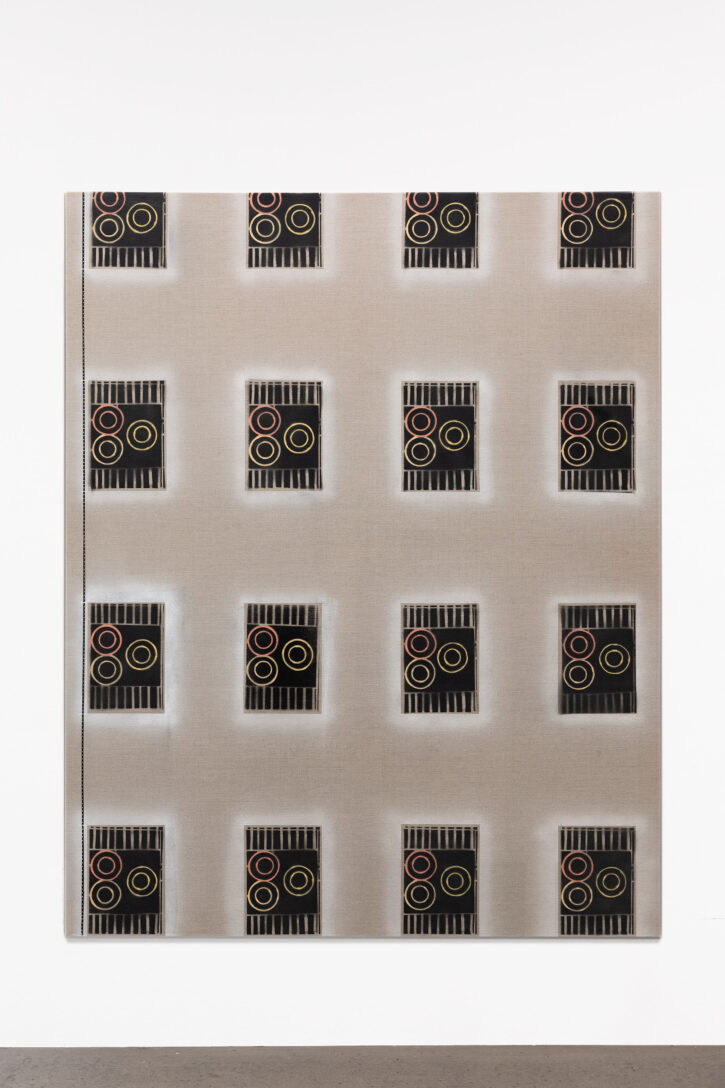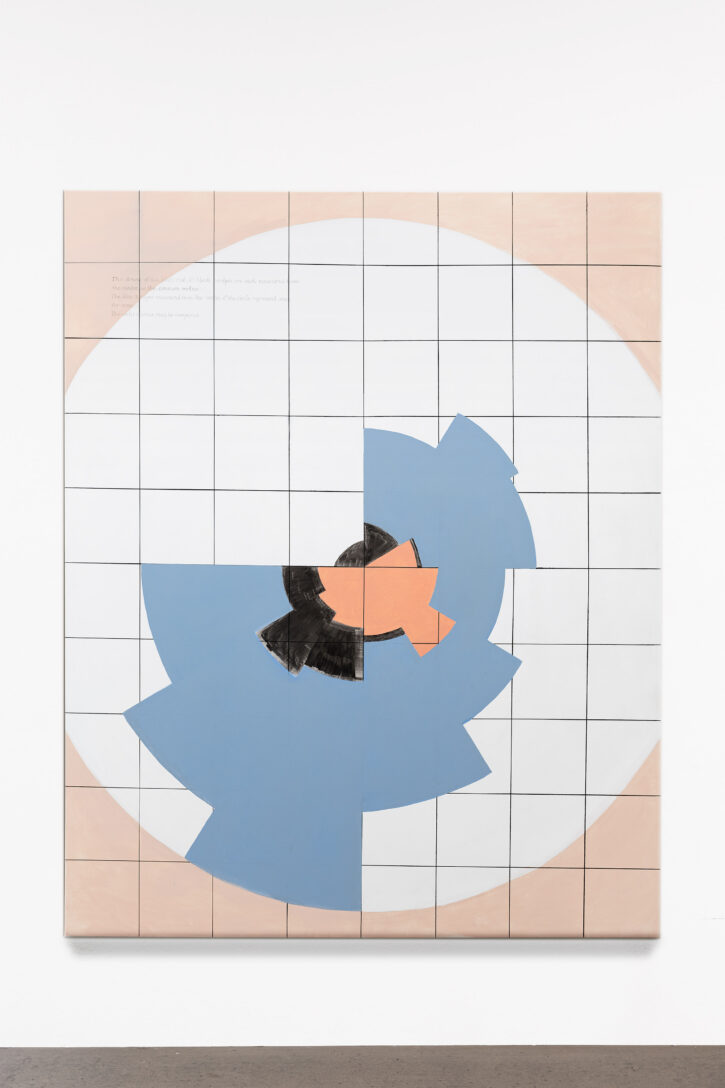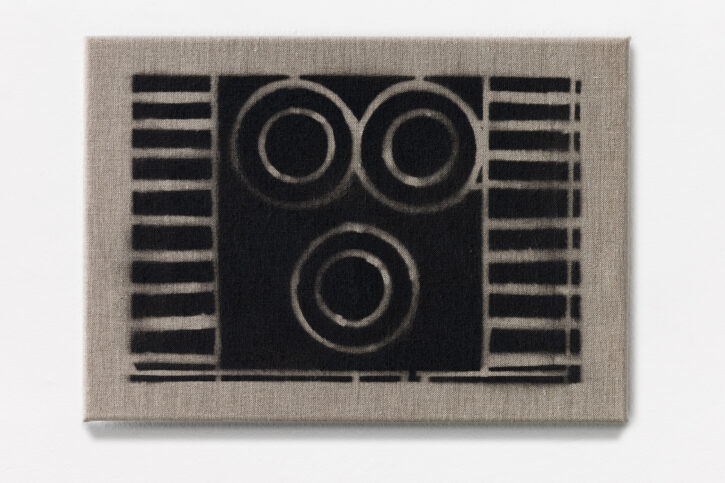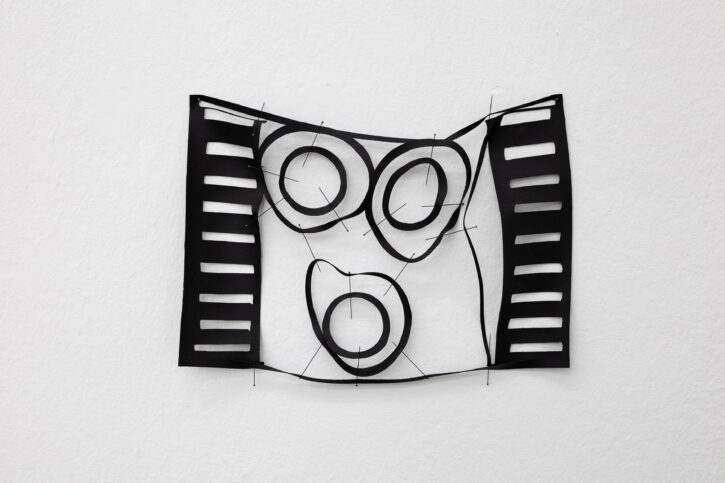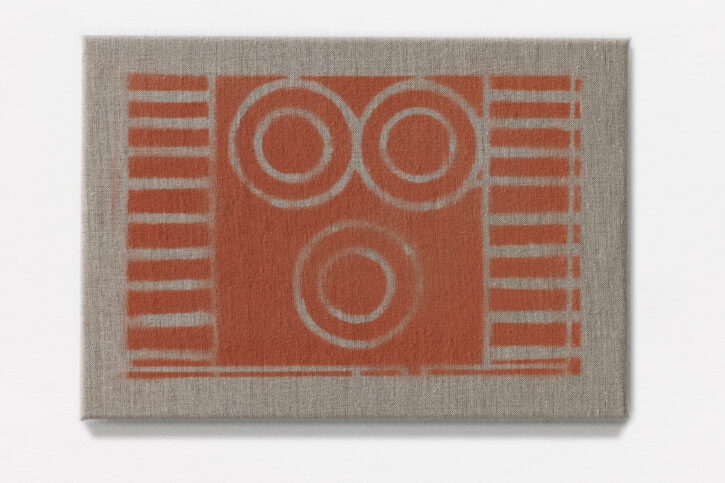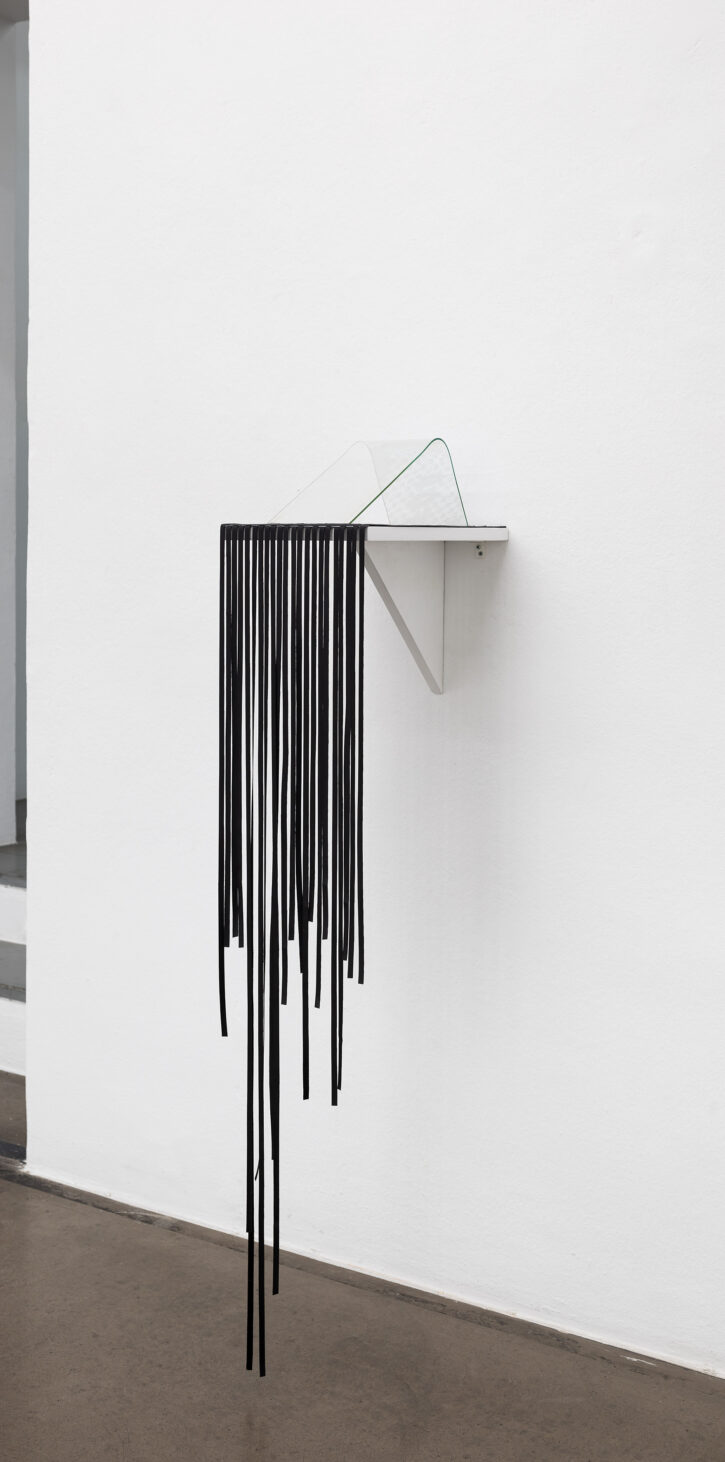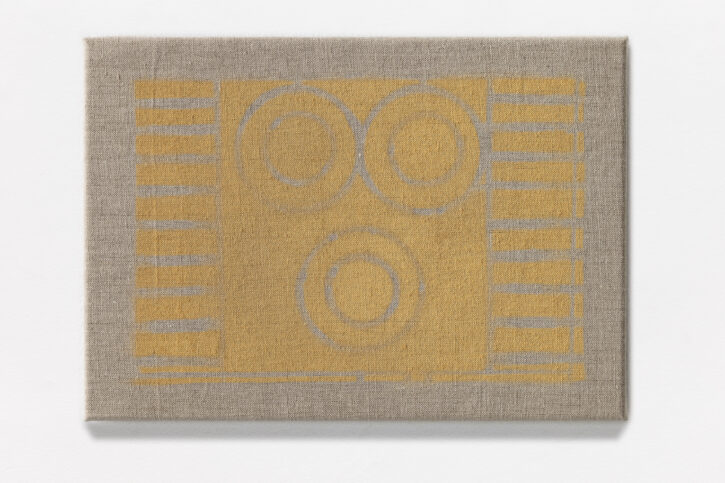Jenni Tischer
About the exhibition
HARD FACTS (I SEE / YOU MEAN) juxtaposes representations of reproductive labor and its infrastructures. The large-scale installation centers around architectural designs and studies by the architect Alice Constance Austin (1862–1955), the nurse and statistician Florence Nightingale (1820–1910), and the artist Friedl Dicker-Brandeis (1898–1944). Jenni Tischer echoes her precursors’ abstractions in both form and content by way of various modes of mimicry, repetition, reformatting, and rematerialization to examine their visual vocabularies as instruments of cognition and tools of transforming social relations.
The motif of the grid plays a pivotal yet ambivalent role. As a modular principle (Tischer employs standardized, multipliable formats), it serves as the basis of the exhibition, as an indefinite modernist framework in which abstract figures and markings are registered. At times, however, this property also collapses into a material specificity. For example, it appears in the form of a grid-like carpet made of cactus leather on the floor, or in a remnant of fabric made of thin strips hanging loosely from a glass object that is also permeated by a grid. It also forms the basis of an optical effect created by staggered sheets of A4 paper with grid-like spray-painted edges, which renders the grid illegible, while the stack of paper is perceived as an orange-grey cuboid.
At the same time, the grid is contrasted with other visual logics in four large-format paintings. In Diagrammatic Image (a) Llano del Rio, a radial structure emanating from the center of the canvas intersects a black grid on a gray background. The triangles, trapezoids, and rectangles created at the intersections form a symmetrical formation of stars, hexagons, and orbits that continue into the next painting. Here, Tischer cites Austin’s bird’s-eye view of a Garden City for the unrealized cooperative colony Llano del Rio (Antelope Valley, California, 1911–1914), which aimed at the fundamental redistribution of reproductive labor in the collective, independent of gender ascriptions, and thus at a reworking of familial relationship models. Tischer humorously hints at the fact that Austin’s feminist urban planning policy literally, that is to say spatially, placed the economic necessity of social reproduction at the center of society by placing a stove taken from Friedl Dicker-Brandeis’s designs at the radial structure’s center.
The recurrent stencil motif of the stove in Diagrammatic Image (c) The power of the Center is the Function of the Frame extends beyond the boundaries of the canvas and updates the invoked historical context in a twofold sense. The repetition mimics the “thankless and unending drudgery” (Austin) of reproductive labor and, moreover, reflects the continuation of its social marginalization, its unbroken gendering and racialization, as well as its late capitalist outsourcing into precarious labor conditions. Echoing Austin’s radial city, Diagrammatic Image (d) Rose Diagram takes the form of a coxcomb or rose diagram invented by Florence Nightingale, an early attempt at visualizing complex data layers published as part of a report in 1858. The diagrammatic figure, which includes an explanatory caption borrowed from the report and transferred to the canvas, is based on Nightingale’s empirical study of different factors affecting the mortality rates of British soldiers during the Crimean War.
By formally equating Austin and Nightingale’s figures within a grid, Tischer converges two conceptually distinct modes of visualization in a way that eclipses their respective specificities and renders them more abstract than their original intentions would suggest: On the one hand, the model of a spatial structure based on perspective construction, facilitating the fiction of a future urban/spatial order, and thus the creation of new social relations. On the other hand, a diagram based on quantification, which, by virtue of abstraction, allows otherwise indiscernible relations between factors that vary in quality (wounds, diseases, season, and hygienic measures) to become immediately apparent.
Tischer’s works also highlight the historicity of the featured figures. For example, by replicating the typography of the explanatory caption in Diagrammatic Image (d) Rose Diagram. Oscillating between decontextualization and anachronism, the figures allow us to gauge the distance between Nightingale’s methods and contemporary strategies of data visualization, but also to question power dynamics in diagrammatic representations, such as the inclusion or exclusion of certain factors and perspectives. Finally, they also touch on questions of diversity across disciplines and perspectives that are indispensable for addressing reproductive labor under capitalist conditions in order to adequately account for the discrepancy between its social relevance and its manifold devaluations and debasements.
– Stefanie Kitzberger 2023 / Translation: Lian Rangkuty
Film: DOP/ Regie: Sebastian Arlamovsky
Skeptika – Illusion of Peace
Skeptika – Earth Travellers
Further informations:
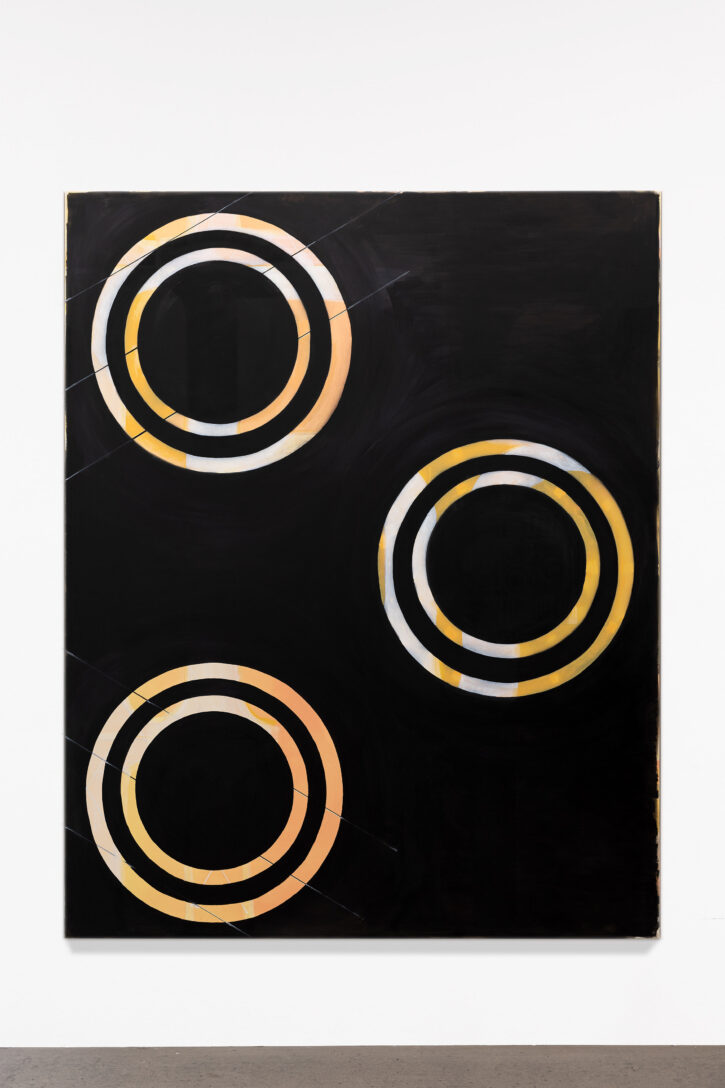
Diagrammatic Image (b) Center of Reproductive Work, 2023
acrylic, oil, pencil on canvas
160 x 200 cm
unique
